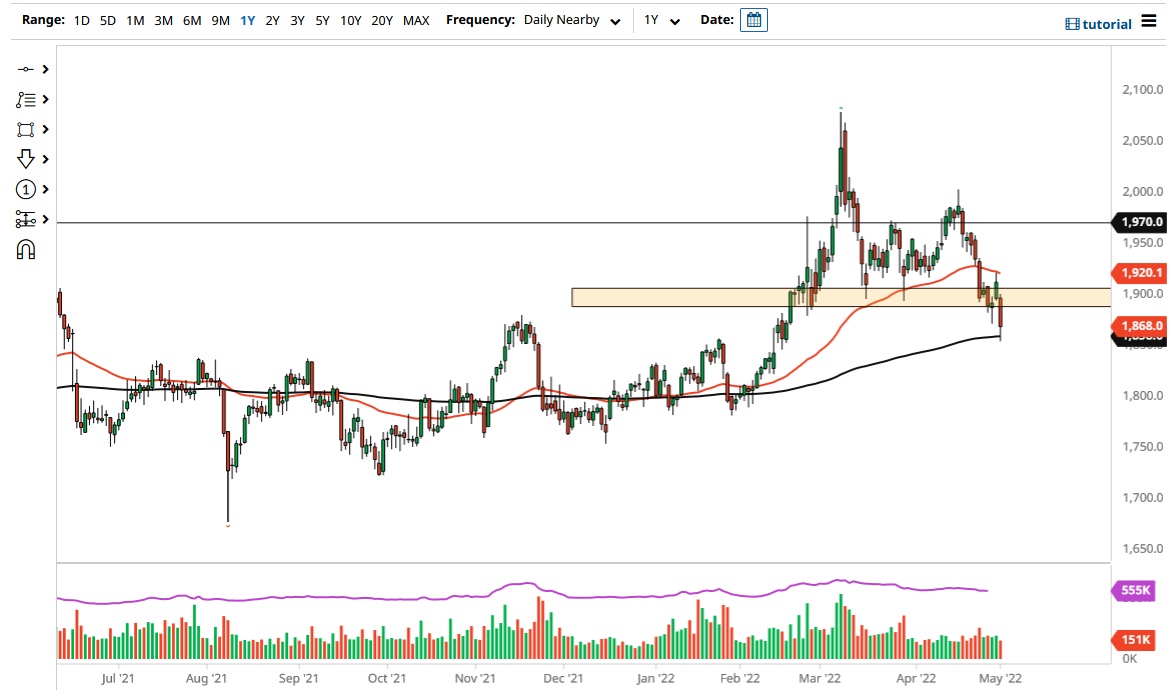As long as traders can get more return for a “risk-free asset” such as a bond, gold loses a lot of its shine.
Gold markets got crushed on Monday as we continue to see the US dollar act like a wrecking ball against everything it touches. Because of this, gold was no different and we managed to fall all the way down to the 200-day EMA. The 200-day EMA is a very important technical indicator that a lot of technically driven traders will pay close attention to, so the fact that we bounced a bit from there is probably not much of a surprise. The question now of course is “Where do we go from here?”
If the market were to break down below the lows of the Monday session, that would indicate that more momentum has come into the marketplace as far as selling is concerned, it would be very likely that the gold market would attempt to reach the $1800 level below, which is not only a psychologically significant area but an area where we have seen a lot of action previously. The main culprit for this will be the US dollar and rising interest rates in the bond market. As long as traders can get more return for a “risk-free asset” such as a bond, gold loses a lot of its shine.
Alternatively, if we were to turn around and start to rally, it is not really until we break above the $1900 level on a daily close that I would consider a reversal in the trend. If we get that, then the market would almost certainly challenge the 50-day EMA, which is currently at the $1920 level. This would take quite a bit of effort, and more importantly, for the US dollar to suddenly stop strengthening. I do not necessarily think that is likely, so more likely than not we will continue to see a lot of downward pressure, and perhaps more of a “sell on the short-term rally” type of feel in this market.
As we are between the 200-day EMA and the 50-day EMA indicators, it quite often means that you are going to see a lot of choppy volatility before a bigger move appears. That makes sense because nobody knows what is going on with the economy at the moment, and all eyes are on the Federal Reserve.


